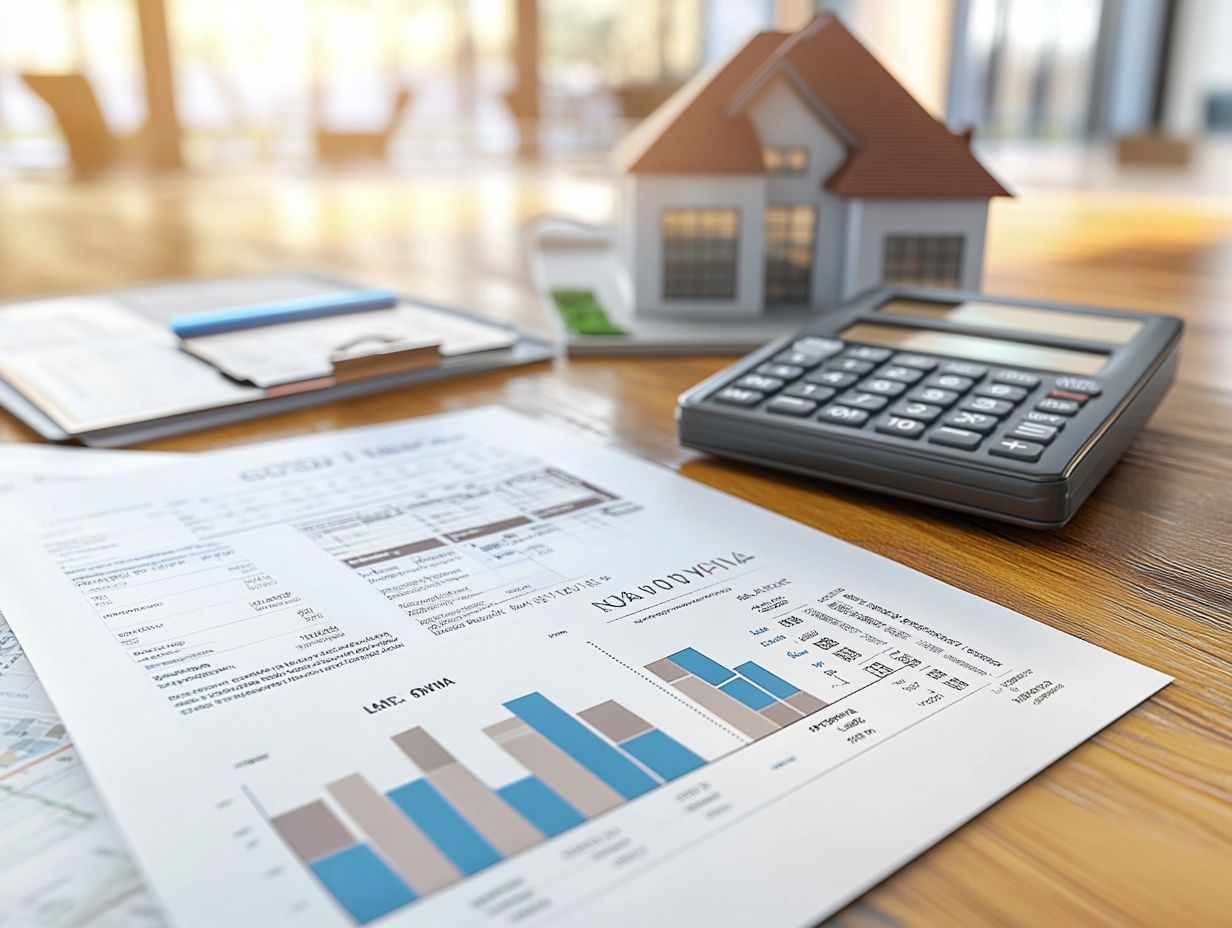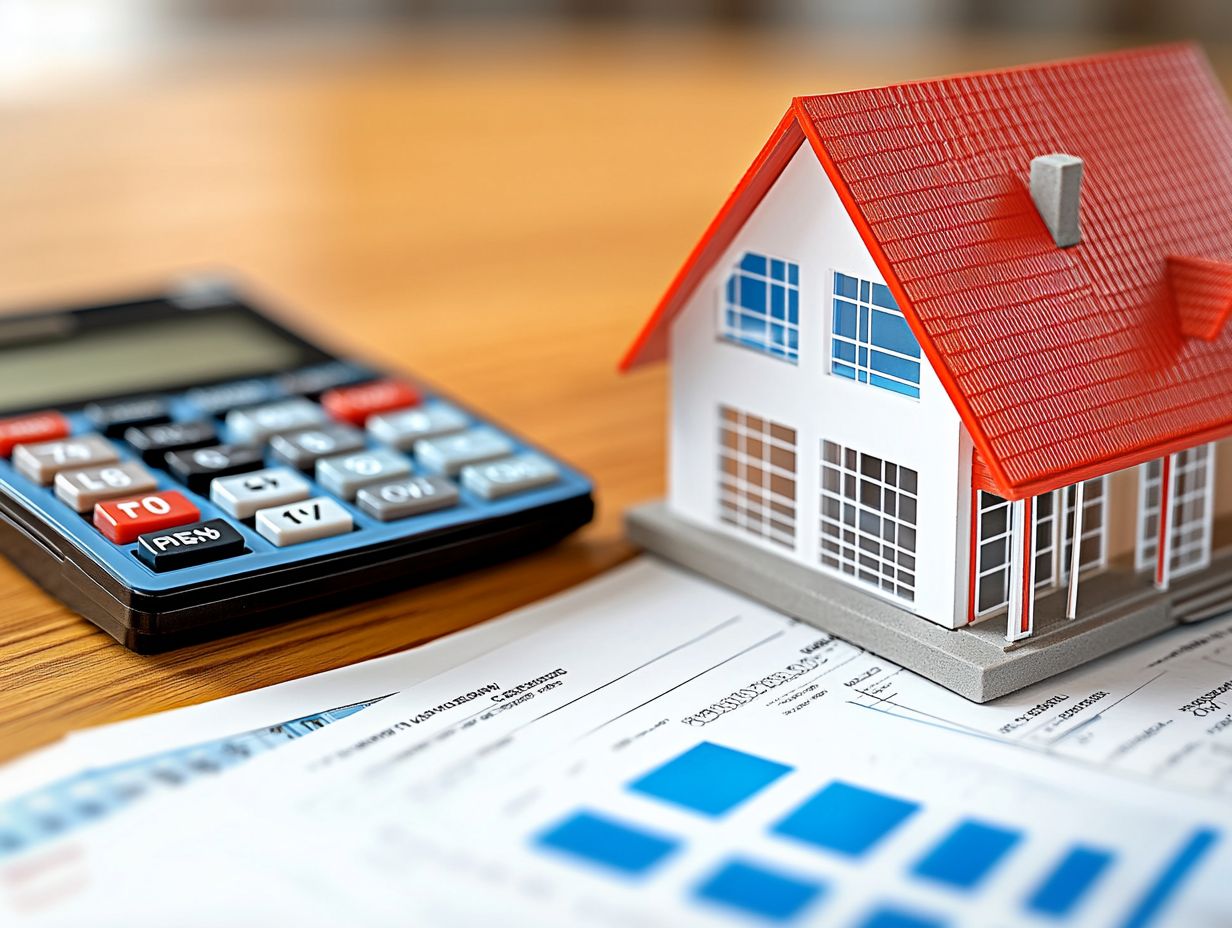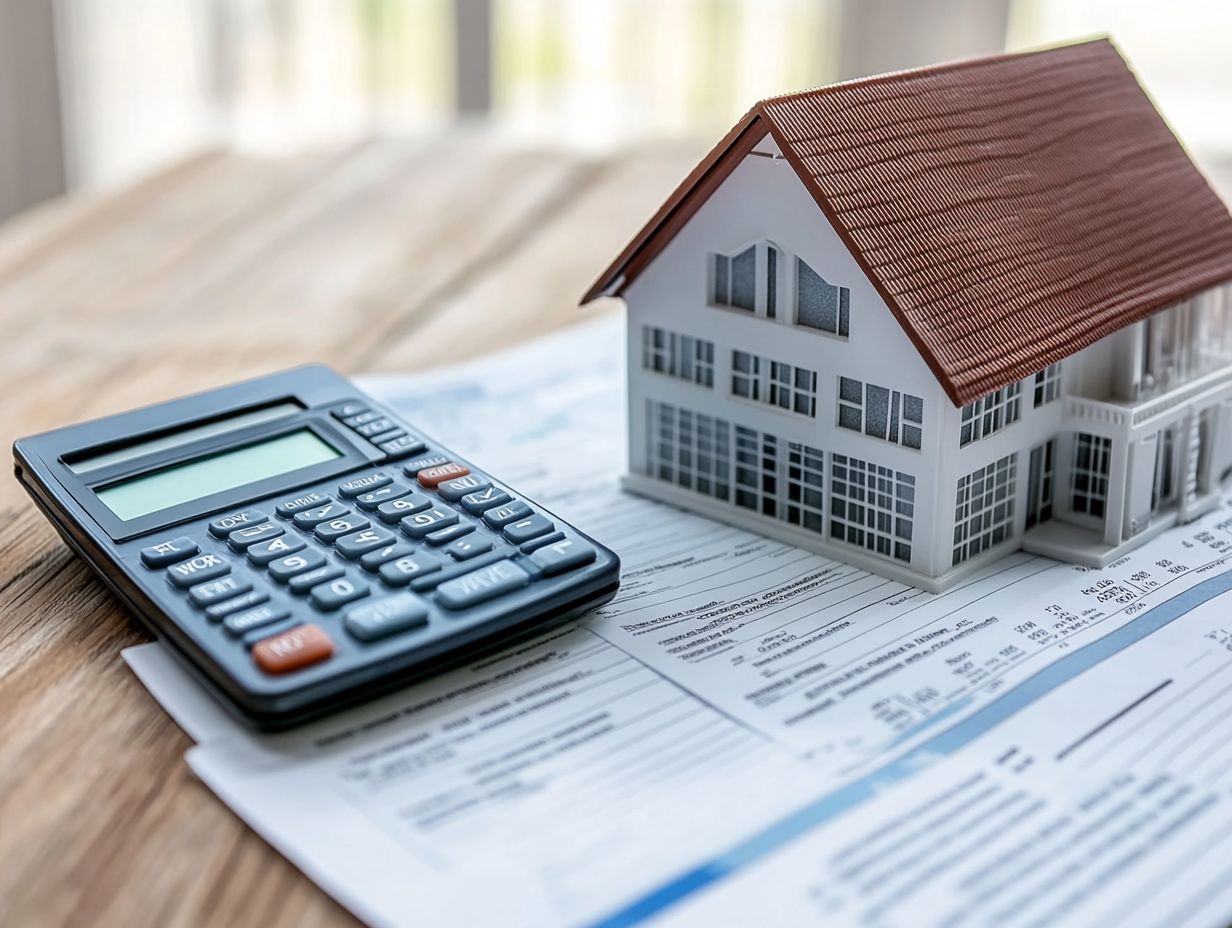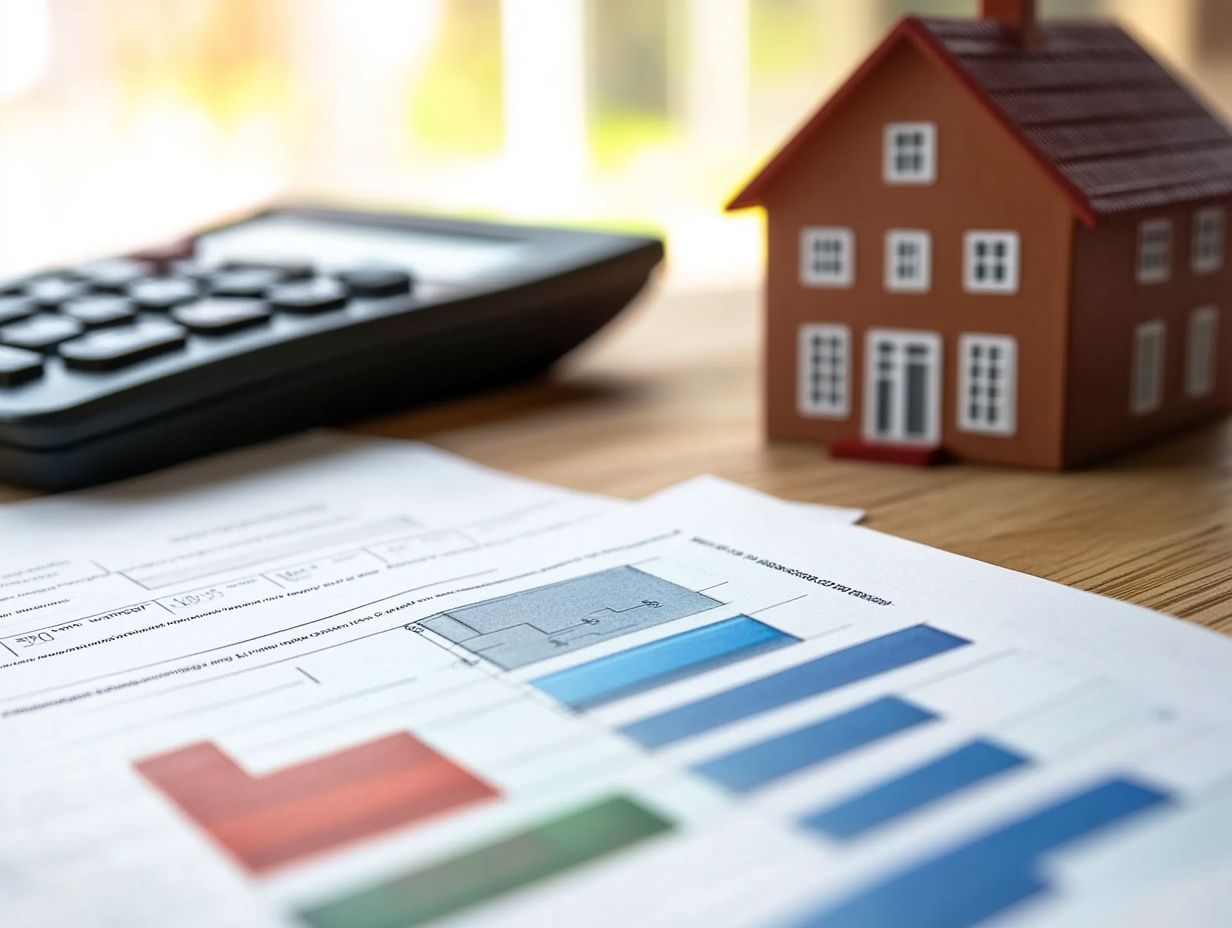What to Know About Loan-to-Value Ratios
Navigating the world of loans can seem daunting. However, mastering the loan-to-value (LTV) ratio can be your ticket to better mortgage offers.
This article demystifies LTV ratios, explaining what they are, how they re calculated, and why they re pivotal in securing loan approval. It delves into the various factors that impact these ratios and provides actionable tips to enhance your LTV, leading to more favorable loan terms.
It also highlights the risks of high LTV ratios, equipping you with the knowledge to approach borrowing with confidence and clarity.
Contents
Key Takeaways:

Understanding the loan-to-value ratio is crucial for borrowers looking to take out a mortgage or other loan. It measures the amount of the loan compared to the appraised value of the property.
LTV ratios are calculated by dividing the loan amount by the appraised value of the property. A lower LTV ratio can improve loan approval chances and result in lower interest rates.
Several factors can impact LTV ratios, including property type, credit score, and down payment. You can improve your LTV ratio by making a larger down payment or enhancing your credit score.
Understanding Loan-to-Value Ratios
Grasping the loan-to-value (LTV) ratio is essential for making well-informed financial choices as you navigate the intricate mortgage landscape. This vital metric, presented as a percentage, serves as a guiding light for both lenders and borrowers in assessing the associated risks of a mortgage.
The LTV ratio is calculated by dividing the loan amount by either the appraised value or the purchase price of a home. A higher LTV ratio signals increased risk to lenders, which can influence the interest rate they offer, ultimately affecting your overall affordability as a homebuyer.
How LTV Ratios are Calculated
Calculating the loan-to-value (LTV) ratio is a seamless process that gives you the power to grasp your financial standing as you navigate the mortgage application journey.
This ratio is derived from a straightforward formula: LTV = (Loan Amount / Appraised Value) 100.
For instance, if you re eyeing a home valued at $300,000 and applying for a loan of $240,000, your LTV would be 80%. This figure highlights a solid equity level, reflecting a well-balanced financial approach.
Formula and Examples
Understanding the loan-to-value (LTV) ratio is crucial for grasping the relationship between your mortgage and the value of your home. To calculate your LTV, simply divide the loan principal by the appraised value of the property.
If you re applying for a mortgage of $200,000 on a home valued at $250,000, your LTV would be 80%. Lenders typically view this favorably.
This ratio is vital across various loan types, including conventional loans, FHA loans, and VA loans, each with its own maximum LTV limits. For instance, conventional loans usually permit an LTV of up to 80% without requiring mortgage insurance. FHA loans can stretch as high as 96.5%, making them particularly attractive for first-time homebuyers. VA loans offer 100% financing, meaning you might not even need a down payment.
Grasping how these calculations influence your loan approval is key. Generally, lower LTV ratios can lead to better mortgage rates, allowing you to save significantly over the life of your loan.
Why LTV Ratios Matter

Loan-to-value ratios are crucial in the mortgage process, significantly affecting both your loan approval chances and the interest rates you may receive.
When your LTV ratio is lower, you often enjoy more favorable lending terms, including reduced rates and the possibility of bypassing mortgage insurance, which protects lenders if borrowers default.
On the other hand, a higher LTV ratio signals increased risk, which can lead to elevated interest rates, stricter requirements for borrowers, and the added expense of mortgage insurance factors that can drive up the overall cost of homeownership.
Wondering how your LTV ratio can affect your mortgage rates? Let s dive in!
Explore your LTV options today to secure the best terms for your loan!
Impact on Loan Approval and Interest Rates
The influence of loan-to-value (LTV) ratios on your loan approval and interest rates is significant. LTV is simply the amount of your loan compared to your home’s value, and it plays a crucial role in how lenders assess risk.
Generally, if you have a lower LTV ratio, you re more likely to secure mortgage approval and enjoy better interest rates. For example, borrowers with a lower LTV can often qualify for conventional loans at competitive rates. In contrast, those with a higher LTV may face challenges, especially when refinancing existing mortgages.
Lenders view LTV ratios as a vital gauge of your financial health and your ability to make timely repayments. A higher LTV signals increased risk, prompting lenders to implement stricter underwriting standards. This can lead to higher mortgage rates or even outright denials.
Fluctuations in property values can greatly influence LTV ratios and subsequently alter your available options. As your LTV rises, the cost of borrowing can escalate, driving rates higher, which may affect your overall loan affordability and long-term financial strategy.
Factors that Affect LTV Ratios
Several critical factors influence your loan-to-value (LTV) ratio, shaping your financial landscape as a prospective homeowner.
The type of property you choose is paramount. Different categories such as single-family homes, condos, and multi-family units come with varying LTV limits.
Your credit score and the size of your down payment are also crucial. Each directly impacts the LTV calculation and, in turn, your mortgage approval and its associated terms.
Your debt-to-income ratio is also important, providing a more comprehensive view of your overall financial situation.
Property Type, Credit Score, and Down Payment
The type of property you choose, your credit score, and the size of your down payment are essential factors determining your loan-to-value (LTV) ratio.
Each property type whether it s an FHA, VA, or USDA loan has its own requirements that influence the maximum allowable LTV. A high credit score can work in your favor, helping to lower your LTV, while a larger down payment can significantly reduce it and boost your overall equity in the property.
For example, FHA loans typically allow LTV ratios of up to 96.5%, making homeownership achievable for many. In contrast, conventional loans generally cap around 80% to 95%, depending on your financial profile. Lower LTV ratios often translate to lower interest rates, leading to significant savings throughout the life of your loan.
By understanding these factors, you can strategically evaluate your options whether you’re pursuing your first home or eyeing an investment property ultimately steering yourself toward more favorable financial outcomes.
How to Improve Your LTV Ratio

Boosting your loan-to-value (LTV) ratio isn t just smart it can supercharge your finances! By reducing the LTV, you can increase your equity, potentially unlocking better mortgage rates and terms.
To achieve a lower LTV, consider these strategies:
- Make larger down payments.
- Increase your home equity through renovations.
- Refinance your existing loans to secure more favorable terms.
Each of these steps can significantly improve your LTV ratio, ultimately providing lasting benefits for your financial future.
Tips for Lowering Your LTV Ratio
Lowering your loan-to-value (LTV) ratio can be achieved through various strategic approaches that enhance your financial profile. One of the most effective methods is to increase your down payment, which directly reduces the loan amount in relation to the home s value.
Investing in home renovations can elevate the appraised value of your property, further lowering your LTV ratio. Utilizing a home equity line can also provide the necessary funds to pay down the principal, enhancing your LTV position.
Consider these strategies to significantly influence your mortgage insurance requirements and overall borrowing potential. A lower LTV ratio often translates to reduced private mortgage insurance (PMI) costs, freeing up valuable monthly cash flow.
Moreover, with a more favorable LTV, lenders may offer better interest rates, allowing you to save on interest payments over the life of your loan. Don t wait! Evaluate your options now to find the best strategies for improving your LTV ratio and fostering long-term financial health.
Potential Risks of High Loan-to-Value Ratios
High loan-to-value (LTV) ratios can present risks for both lenders and borrowers. They shape crucial financial decisions in the housing market.
A high LTV ratio often indicates a low equity position. This increases the risk of loan defaults if you face financial challenges.
You may also encounter negative equity, where you owe more on your mortgage than your home is worth.
In these cases, mortgage insurance may become necessary, adding to your financial burden.
Defaulting on Loans and Negative Equity
Defaulting on loans and facing negative equity can create serious challenges. This is especially true if your LTV ratio is high.
When you default, your credit score suffers. This situation impacts the housing market and lenders’ financial health too.
Negative equity can limit your refinancing or selling options. This challenge often arises when property values decline.
As LTV ratios exceed 100%, the risks grow. Many homeowners confront foreclosure or must consider a short sale.
These scenarios can lead to a downturn in the housing market, lowering property values and discouraging buyers. Lenders may also struggle with rising defaults.
This cycle affects you, lenders, and the economy, highlighting the need for careful financial planning and market awareness.
Preguntas Frecuentes

Qu es la relaci n pr stamo-valor?
La relaci n pr stamo-valor (LTV) es una medida que los prestamistas usan para evaluar el riesgo de un pr stamo. Compara el monto del pr stamo con el valor del activo, como una casa.
C mo se calcula la relaci n pr stamo-valor?
Se calcula dividiendo el monto del pr stamo por el valor del activo. Por ejemplo, si tomas un pr stamo de $200,000 y la casa vale $250,000, la LTV es del 80%.
Por qu es importante la relaci n pr stamo-valor?
La LTV ayuda a los prestamistas a medir el riesgo de un pr stamo. Una LTV alta puede afectar la tasa de inter s y las condiciones del pr stamo.
Cu l es una buena relaci n pr stamo-valor?
Una LTV buena suele ser 80% o menos. Esto significa que tienes al menos un 20% de capital en la garant a.
C mo puedo mejorar mi relaci n pr stamo-valor?
Para mejorar tu LTV, aumenta tu pago inicial o paga deudas relacionadas con la garant a. Esto mejora tu capital y reduce la LTV.
Puede cambiar la relaci n pr stamo-valor?
S , la LTV puede cambiar con el tiempo. Si el valor del activo aumenta, la LTV disminuye. Tambi n disminuir al pagar el pr stamo.





